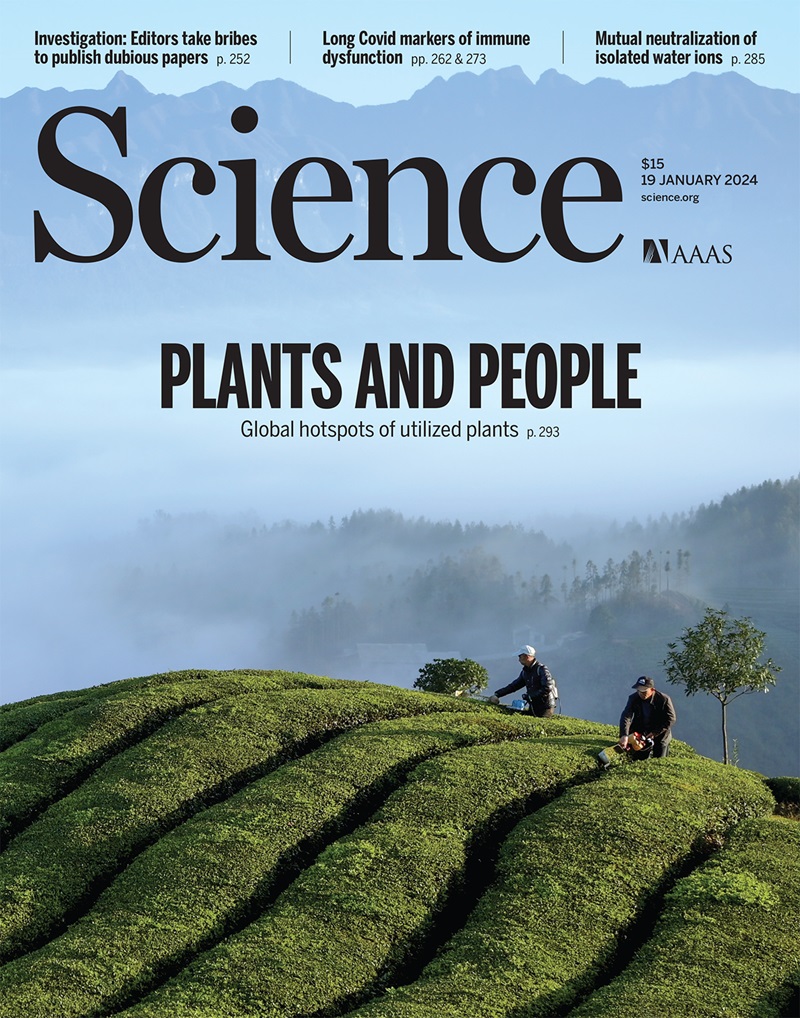分离抗焦虑行为状态下的迷幻药反应神经元
IF 44.7
1区 综合性期刊
Q1 MULTIDISCIPLINARY SCIENCES
引用次数: 0
摘要
迷幻药有望成为治疗神经精神疾病的替代疗法。然而,它们驱动适应性行为效应的神经机制仍不清楚。我们分离了受迷幻药调节的特定神经元,以确定它们在驱动行为中的作用。利用光和钙依赖性活动整合器,我们对小鼠内侧前额叶皮层(mPFC)中的迷幻药反应神经元进行了基因标记。单核 RNA 测序显示,迷幻药驱动了多种细胞类型的网络级激活,而不仅仅是那些表达 5- 羟色胺 2A 受体的细胞。我们在迷幻药反应的 mPFC 神经元上标记了兴奋性通道荧光素,以便对其进行有针对性的操作。我们发现,重新激活这些细胞可以重现迷幻药的抗焦虑作用,而不会产生类似致幻剂的效果。这些发现揭示了迷幻药诱导行为状态的细胞类型特异性机制的重要见解。本文章由计算机程序翻译,如有差异,请以英文原文为准。
Isolation of psychedelic-responsive neurons underlying anxiolytic behavioral states
Psychedelics hold promise as alternate treatments for neuropsychiatric disorders. However, the neural mechanisms by which they drive adaptive behavioral effects remain unclear. We isolated the specific neurons modulated by a psychedelic to determine their role in driving behavior. Using a light- and calcium-dependent activity integrator, we genetically tagged psychedelic-responsive neurons in the medial prefrontal cortex (mPFC) of mice. Single-nucleus RNA sequencing revealed that the psychedelic drove network-level activation of multiple cell types beyond just those expressing 5-hydroxytryptamine 2A receptors. We labeled psychedelic-responsive mPFC neurons with an excitatory channelrhodopsin to enable their targeted manipulation. We found that reactivation of these cells recapitulated the anxiolytic effects of the psychedelic without driving its hallucinogenic-like effects. These findings reveal essential insight into the cell-type–specific mechanisms underlying psychedelic-induced behavioral states.
求助全文
通过发布文献求助,成功后即可免费获取论文全文。
去求助
来源期刊

Science
综合性期刊-综合性期刊
CiteScore
61.10
自引率
0.90%
发文量
0
审稿时长
2.1 months
期刊介绍:
Science is a leading outlet for scientific news, commentary, and cutting-edge research. Through its print and online incarnations, Science reaches an estimated worldwide readership of more than one million. Science’s authorship is global too, and its articles consistently rank among the world's most cited research.
Science serves as a forum for discussion of important issues related to the advancement of science by publishing material on which a consensus has been reached as well as including the presentation of minority or conflicting points of view. Accordingly, all articles published in Science—including editorials, news and comment, and book reviews—are signed and reflect the individual views of the authors and not official points of view adopted by AAAS or the institutions with which the authors are affiliated.
Science seeks to publish those papers that are most influential in their fields or across fields and that will significantly advance scientific understanding. Selected papers should present novel and broadly important data, syntheses, or concepts. They should merit recognition by the wider scientific community and general public provided by publication in Science, beyond that provided by specialty journals. Science welcomes submissions from all fields of science and from any source. The editors are committed to the prompt evaluation and publication of submitted papers while upholding high standards that support reproducibility of published research. Science is published weekly; selected papers are published online ahead of print.
 求助内容:
求助内容: 应助结果提醒方式:
应助结果提醒方式:


